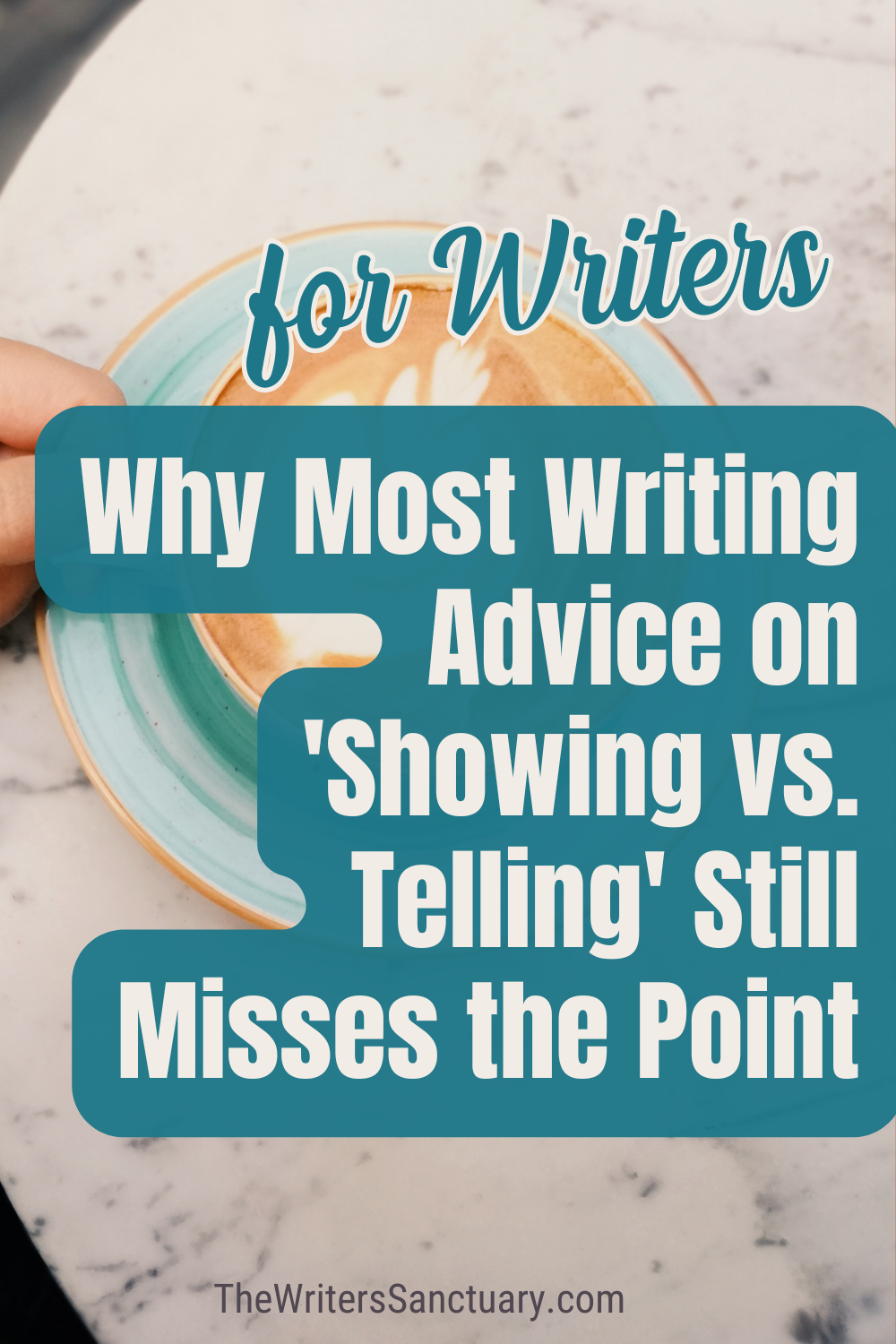Why Most Writing Advice on 'Showing vs. Telling' Still Misses the Point
If you've spent more than five minutes in a writing workshop, you've probably heard it: “Show, don’t tell.” It's one of the most overused pieces of writing advice in existence, right up there with “kill your darlings” and “write what you know.” And while there's truth behind the phrase (Heck, we teach it to our clients all the time!), most explanations of it are either too vague to be useful or so rigid they make you terrified to use a single narrative sentence.
Let’s fix that. Here’s what “show vs. tell” actually means, how to use it well, and why obsessing over it can sometimes make your writing worse instead of better.
What the Phrase Really Means
At its core, “showing” is about engaging your reader’s senses and emotions by immersing them in the scene. “Telling” is about delivering facts or conclusions in a more removed, efficient way. Neither is good or bad. They’re tools. The trick is knowing when to use which.
Showing:
Her hands trembled as she tried to slide the key into the lock. Twice she missed. The third time, the door finally opened and she slipped inside, breath caught in her throat.
Telling:
She was afraid someone was following her.
See the difference? One makes you feel like you're there. The other summarizes what happened.
Where the Advice Goes Wrong
Most advice boils down to “never tell, always show.” That’s nonsense. If you tried to show everything, your book would be 200,000 words long and nobody would make it past chapter two. Telling is efficient. It’s helpful. It’s necessary. You just don’t want to rely on it at the expense of emotion, momentum, or immersion.
The goal isn’t to cut all telling. It’s to prioritize emotional impact—and choose the method that delivers it best.
How to Actually Use It
Here’s a simple system you can use to check your scenes.
1. Ask: What’s the emotional heart of this moment?
If a character is devastated, triumphant, humiliated, betrayed—that’s the place to slow down and show. Zoom in on body language, sensory details, internal reactions, fragmented thoughts. Put the reader in their skin.
If your character is walking across a field to get to the actual scene, go ahead and tell: “She crossed the field in ten minutes.” Done. No one needs a paragraph about blades of grass unless it adds emotional weight.
2. Don’t show things no one cares about.
If your character orders a latte, you do not need a paragraph of rich sensory description about milk foam unless that latte is symbolic, poisoned, or the only thing tethering your heartbroken character to reality. Otherwise: “She grabbed a latte on her way to the meeting.” We’re good.
3. Watch for summary conclusions.
Telling often shows up in the form of conclusions. Things like:
He was furious.
She hated her mother.
They were in love.
None of those are bad. Instead, they’re opportunities. Don’t just tell us he’s furious. Let us see him slam the door, grit his teeth, tear the envelope in half. Then the emotion hits harder. If a line feels flat, ask: “What does that actually look like in the moment?”
4. Use telling for transitions and logic.
If you’re moving time forward, or clarifying a choice, telling can save your pacing.
Twelve hours later, the body was gone.
He didn’t know why he trusted her, but he did.
The next few days passed in a blur of meetings and missed calls.
See? Clean. No melodrama. These are great ways to move the story forward.
5. Use a Show–Tell Sandwich.
One of our favorite tricks is to sandwich a sentence of telling between two lines of showing.
Example:
She kicked the door open and stormed into the room. She was done playing nice. Her voice came out sharp as glass.
It lets you sneak in a clean, powerful internal truth without slowing the momentum.
Bonus Tip: It's Okay to Just Tell Sometimes
We don’t need to show everything. We don’t need to write like we’re being graded by a creative writing professor. Your reader doesn’t want a flex. They want a story. Sometimes “he was exhausted” is the perfect sentence.
Final Thought
“Show, don’t tell” isn’t a rule. It’s a lens. It helps you decide where to go deep and where to keep it simple. The real goal is emotional clarity and reader immersion. Use whatever tool gets you there. No guilt, no second-guessing every sentence. Trust your instincts. They’re probably better than you think.
Want help nailing your prose, scene work, and emotional resonance? That’s exactly what we work on inside the Iconic Mentorship. Whether you’re prepping a manuscript for submission or building your indie author brand, we’ll help you get clear, stay consistent, and write your best work yet. Check out Iconic here.


